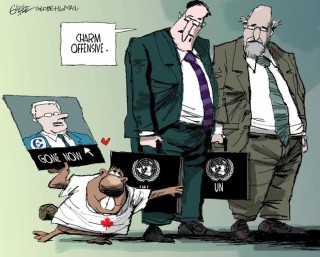Elementary and high-school students across Canada will have a chance to participate in the federal election voting process first-hand through a national program.
The initiative, known as Student Vote, is designed to encourage students to learn about government and the electoral process while they also improve digital literacy skills.
Civix, an independent charity, is working with Elections Canada to offer the program to students for the fall election – a relationship considered to be important for the charity’s credibility and non-partisanship.
Since 2003, it says it has co-ordinated 46 student voting programs across the country. This year will be the sixth federal election and largest to date for the program.
The Globe and Mail is also a supporter of the program for the election. The newspaper will provide free online access to its website for affiliated schools until the end of October.
The goal is to encourage students to follow along with election-related news and learn about political parties, the leaders and the electoral process.
“News literacy is a vital component of being a citizen so helping youth under the voting age to understand our democratic processes is a privilege,” said David Walmsley, editor-in-chief of The Globe.
Having access to a credible source of information is particularly important in 2019, said Taylor Gunn, president of Civix.
“What we are trying to do is … make sure that we are building habits of informed citizenship that come from consuming news from credible sources,” he said.
“That is an essential skill of citizenship is how do you know what is true in 2019 and how do you navigate political claims from parties or third parties or friends or family.”
The Student Vote program is open to any elementary, middle or high school without cost and schools may offer it to a single class or the entire student population.
More than 25,000 teachers are expected to participate in federal election activities, Civix says, adding that more than a million students are expected to cast their ballots from thousands of schools with results from all 338 ridings in the country.
Students are to cast their ballots the week before the election and results will be published after polls close on Oct. 21.
“What we are trying to do is use the election as a teachable moment,” Mr. Gunn said.
“We are just so grateful for the teachers that decide to take this up and who decide our democracy is important enough to bring lessons and activities about how to be a citizen into their classroom during an election.”
Any teacher can sign up for the program, he added, noting registration includes access to educational tools including online pedagogical materials, posters and election supplies. The materials are available in both official languages.
KRISTY KIRKUP
The Globe and Mail, September 10, 2019

